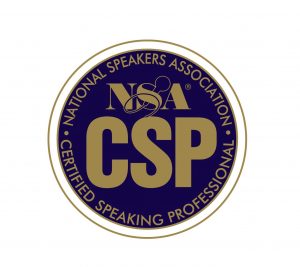As I was cleaning out files, I found one of my articles that was published in June 2004. Here it is with some slight editing that was specific to the time period in which it was written.
Ok – I’ll admit it – I’m a management culture geek.
I can’t stop thinking about the so-called “reality” of the workplace as seen through the eyes of a decadent, arrogant billionaire, (aka The Donald) and his whining and backstabbing wannabes.
The Apprentice
People keep saying that The Apprentice represented the reality of work. You’ve got to be kidding me. Whose work? And where? Businesses that are within a five-mile radius of Trump Tower?
And yet – I found myself drawn to the show like a moth to a flame. I couldn’t help myself…because for every two things that I found objectionable, I found something redeeming, which really surprised me. I actually found myself taking geeky notes while watching the show or quotes from interviews. (I really do need to get a life…)
Here is one objectionable quote and one redeeming or at least interesting observation:
Trump: “Two beautiful words: You’re Fired!”
I doubt that the hundreds of thousands of people affected by layoffs, corporate crumblings or off-shore outsourcing would share that thought. I can think of two words that they would probably say to him – but they can’t be printed here.
But Trump did have an interesting observation that he shared in an interview after the final episode. He said: “the women were unbeatable when they were working together – yet they became less effective when they were mixed with the men.” Hhhmmm.
If that’s the case, let me re-phrase that: The men were less effective when they were working together, but became more effective when they were mixed with women. (Somehow I like that version better.)
Either way, that seems closer to reality than anything else I’ve heard. Having been a Human Resource executive for several companies over the years, I’ve seen the dynamics in action.
However, rather than focus on the gender dynamics of leadership and teamwork, I find the behind-the-scenes aspect of “power” more interesting. Because it seems to me that whether it’s The Donald or the apprentices or anyone else, for that matter –we’re all seeking to demonstrate power. Each finding different ways to express it.
Stages of Power
I recently found notes for a workshop that I had presented in the late 1980s called: “Power in the Workplace.” The premise is that there are six stages of power and people demonstrate specific behaviors at each stage. People move progressively to the next stage, primarily by learning from a crisis (or sometimes a series of crises). Some people never learn and therefore will stay at the same stage of power, repeating the same behaviors, which may become overworked and eventually ineffective.
To give you an example, our Apprentice friends would perhaps be at a typical Stage 3 style of power. Here a person sees power through symbols – titles, salary, corner offices, material possessions. They desire a high degree of control and tend to be ego-centric and competitive. They’re usually ambitious, aggressive and want to be, or are an “expert” in their field.
Some of you reading this may be saying – “I want that! Why can’t I have that too?” (Stage 2) or “Isn’t everybody like that? What’s wrong with you?” (Stage 3) or “I remember feeling like that. I’m glad I’m over it.” (Stage 4).
The point is, the American workforce seems to be at a crossroads. On one hand, we’re enamored with aspirations for wealth and the traditional view of power.
On the other hand, there is a fast emerging trend for “authentic living”, “the purpose driven life” and “leading with soul.” Take a look at the business best sellers list (2004) – you’ll see what I mean.
Fast forward to 2016 and politics aside, I think the American public is not only wanting but requiring what I now call “Type T” Leadership. For example, new technology, new regulations, globalization and the Millennials are requiring managers to lead in new ways, whether they want to or not!
Donald Trump’s brand of leadership is what I refer to as “Type A” leadership. It’s based on the management models that were popular from post World War II to the 1990’s. This style is characterized by “command and control,” top down domination and focused on the bottom line. Decisions are often based on short term results, that look at quarterly outcomes rather than long term strategic thinking.
“Type T” leadership is required for the 21st century. Type T leaders demonstrate inclusion, diversity, strategic, long term decisions, innovation and empowerment.
For more information on being a Type T leader, watch this 1 minute video.
Or order the book on How to Be a Transformational Leader in a Bottom-Line World.
Marty Stanley, CSP, is a national speaker and consultant on personal and organizational change. She works with executives on how to lead and manage in the 21st century so they can attract and retain their ideal employees and customers. martystanley@alteringoutcomes.com www.alteringoutcomes.com 816-695-5453









